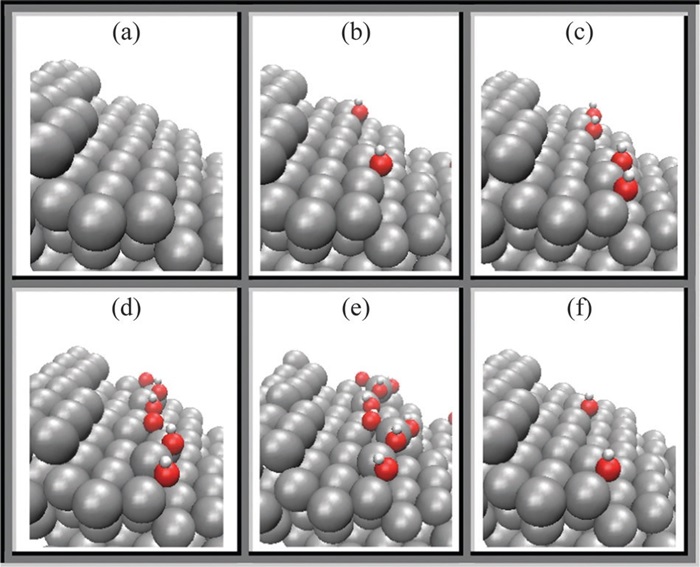Monday, 05/01/2026 | 17:01 GMT+7
Storage of energy from renewable energy sources is vital to Europe’s energy policy. DTU Energy and partners use atomic modelling to develop a rechargeable zinc-air battery that is able to store large amounts of energy.
Europe’s current energy system is confronted with a number of uncertainties, chief among those the highly volatile fossil fuel prices and the geopolitical risks related to import dependency. Increased utilization of renewable energy sources are expected to help negate these uncertainties while lowering CO2 emissions, but to reach the goal of 20% renewable energy production in EU by 2020, more efficient energy storage facilities are needed.
Large stationary batteries are considered one of the key storage technologies for making this shift in power production available, and zinc-air batteries are one of the promising options for stationary storage due to their potential for high energy density combined with environmentally friendly and low-cost materials. Zinc-air is a promising candidate, as it can be handled safely in a normal atmosphere, and as an example Zinc-air non-rechargeable cells are currently used in hearing-aid devices. The challenge of the project is to make Zinc-air technology rechargeable.
“Wind farms generally have a lot of space available for stationary batteries used for storage, so the important thing is the production price of the batteries, their durability and ability to react fast to peak situations”, explains Professor Tejs Vegge, Department of Energy Conversion and Storage (DTU Energy) at the Technical University of Denmark.

DTU Energy is a part of the new Horizon 2020 EU-project “Zinc Air Secondary innovative nanotech based batteries for efficient energy storage”, abbreviated ZAS. Here, the Danish university together with four international research institutes and four industrial partners aims to research and develop metal-air batteries fit for rapid storage and release of the high amounts of energy from energy sources like solar cells and windmills with time dependent fluctuations.
The ZAS consortium covers a wide range of complementary skills, expertise and resources within the field of batteries, using the supercomputers at the DTU facility Niflheim to make atomic scale models and perform computer simulations of the zinc anode and air cathode to facilitate discovery of improved electrode materials and develop a working cell design.
“We can’t use pure zinc in a rechargeable system, so we have to get an in-depth understanding of the materials and the mechanisms of both the anode and the cathode to find the right type of alloy for the battery. We use large-scale quantum chemical computer simulations to simulate why the materials act and react as they do to make them more effective. That knowledge is also important for the stability and lifetime of the entire system.”
The ZAS consortium aims for zinc-air batteries that are able to do 1000 cycles of load and discharge, but hope to approach the 10.000 cycles that is a requirement for full market entry. To reach one or the other of those goals, the consortium has to not only research the materials and nanostructural compositions for the battery, but also to lay the structural foundation for hybridization with existing energy storage systems.
The ZAS-project, “Zinc Air Secondary innovative nanotech based batteries for efficient energy storage” (use link to download), is sponsored with 6.3 million euro under EU’s Horizon 2020-research and innovation framework programme, and the project is expected to run for three years, starting up 1st June 2015. “Zinc-air batteries have a high energy density and zinc is an abundant and environmentally friendly resource. So there is potential for a cheaper solution for cyclic storage and release of energy than the well known lithium Ion-batteries (Li-ion)”, says Professor Tejs Vegge and continues.
“Li-ion batteries have an acceptable energy density for stationary storage, but most that are available on the market cost upwards of 500 euro/kWh, and the new Tesla PowerWall has just been offered at $350-$425/kWh, whereas the zinc-air batteries will expectedly be below 300 euro/kWh. Zinc-air batteries are promising in that perspective, but we need to do a lot of research to find the right materials and structures, and optimize it from lab scale to demonstration level.”
Truong Duy








 Webinar 2: “Financial Support for Energy Efficiency Enterprises – Opportunities and Challenges”
Webinar 2: “Financial Support for Energy Efficiency Enterprises – Opportunities and Challenges”
 Vietnamese enterprises achieve green growth and cut costs through energy efficiency
Vietnamese enterprises achieve green growth and cut costs through energy efficiency
 Capacity Building for Program Implementing Entity
Capacity Building for Program Implementing Entity
 Enhance Energy Efficiency Knowledge for Managers of Cement Industrial Enterprises
Enhance Energy Efficiency Knowledge for Managers of Cement Industrial Enterprises
 Capacity building for participating financial institutions in Ho Chi Minh City
Capacity building for participating financial institutions in Ho Chi Minh City
 Strengthening capacity for energy management officers of local government agencies
Strengthening capacity for energy management officers of local government agencies
 Steel Enterprises Saving Energy and Enhancing Competitiveness
Steel Enterprises Saving Energy and Enhancing Competitiveness